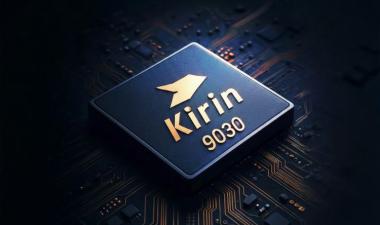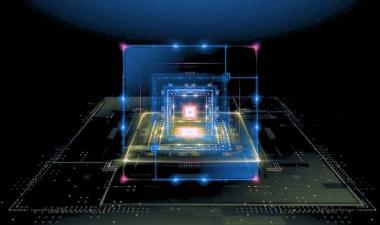Posted: September 12, 2016
Contributing Authors: Dick James
As usual, within days of the August 19 launch of the Samsung Galaxy Note 7, we had it in pieces and had identified most of the significant components that were inside.
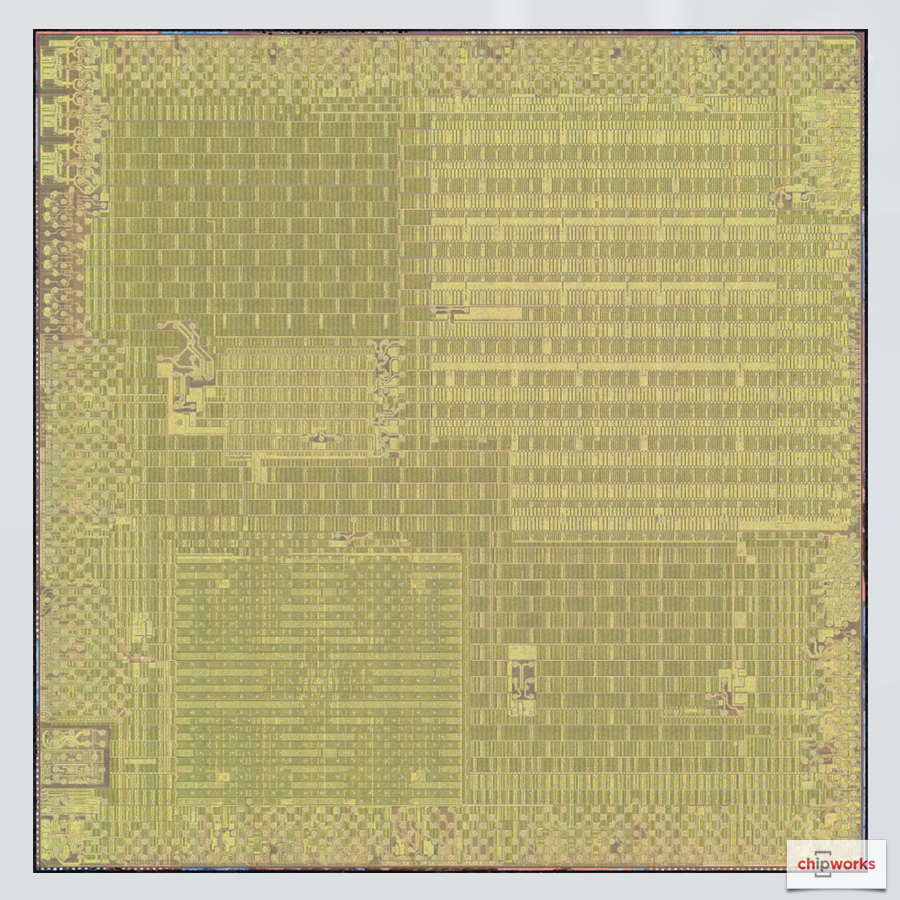
Samsung Galaxy Note 7 Die Photo
APU and memory
The application processor that drives our phone is the Exynos 8 Octa (Exynos 8890), similar to the Galaxy S7 and S7 edge. It has an eight-core CPU, with four Samsung-designed M1 cores that can run at 2.3 GHz, and four ARM Cortex A53 cores operating at up to 1.6 GHz. The graphics side of the chip uses an ARM Mali-T880 MP12 GPU (with 12 graphics cores). It has a LTE Category12/13 modem and is made with their latest 14LPP finFET process.
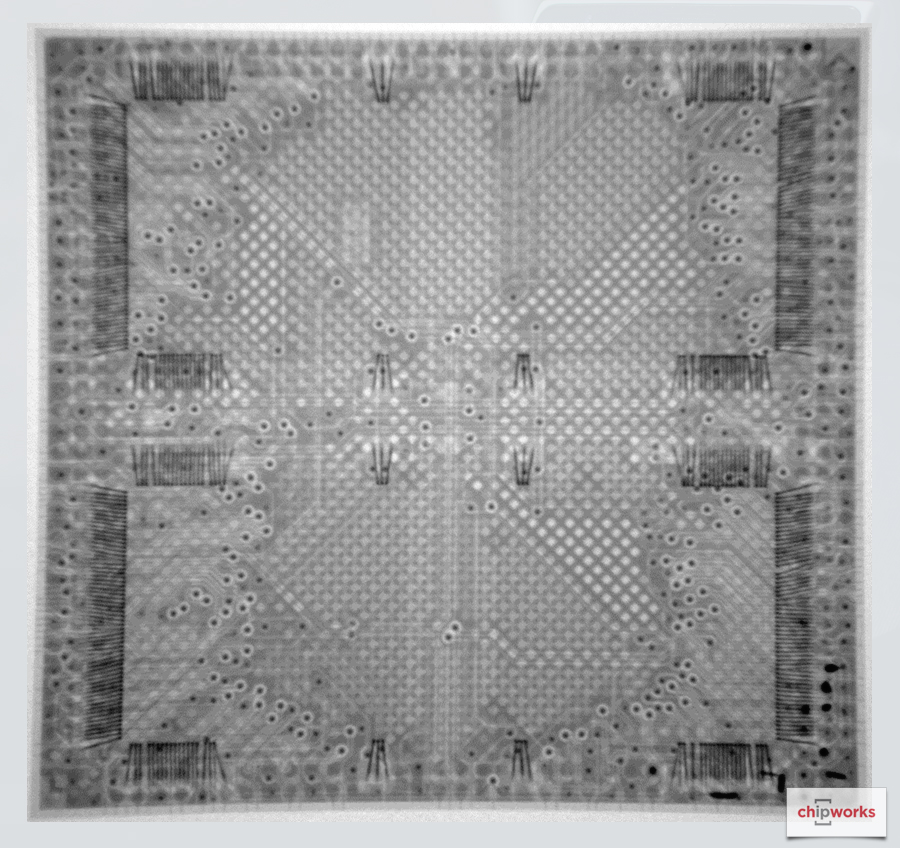
Samsung Galaxy Note 7 plan-view X-ray
Stacked on top of the CPU in the usual package-on-package (PoP) stack, is 4 GB of Samsung LPDDR4 SDRAM. Now that we have 20 nm DRAM processes, the dies are small enough that they are packaged in a 2 x 2 x 2 configuration. Here is the plan-view X-ray image showing the wire bonding of the memory chips. The four stacks of memory dies are mirror-imaged, on both the vertical and horizontal axes.
The dies are just about square (5.4 x 5.1 mm), which means four stacks of two 4 Gb dies, reducing the package thickness to 0.5 mm. This may be the first time we have seen this particular layout.
The 64 GB of flash memory was supplied by a Toshiba THGBF7G9L4LBATR UFS 2.0 part, fabricated using the latest 15 nm generation process.
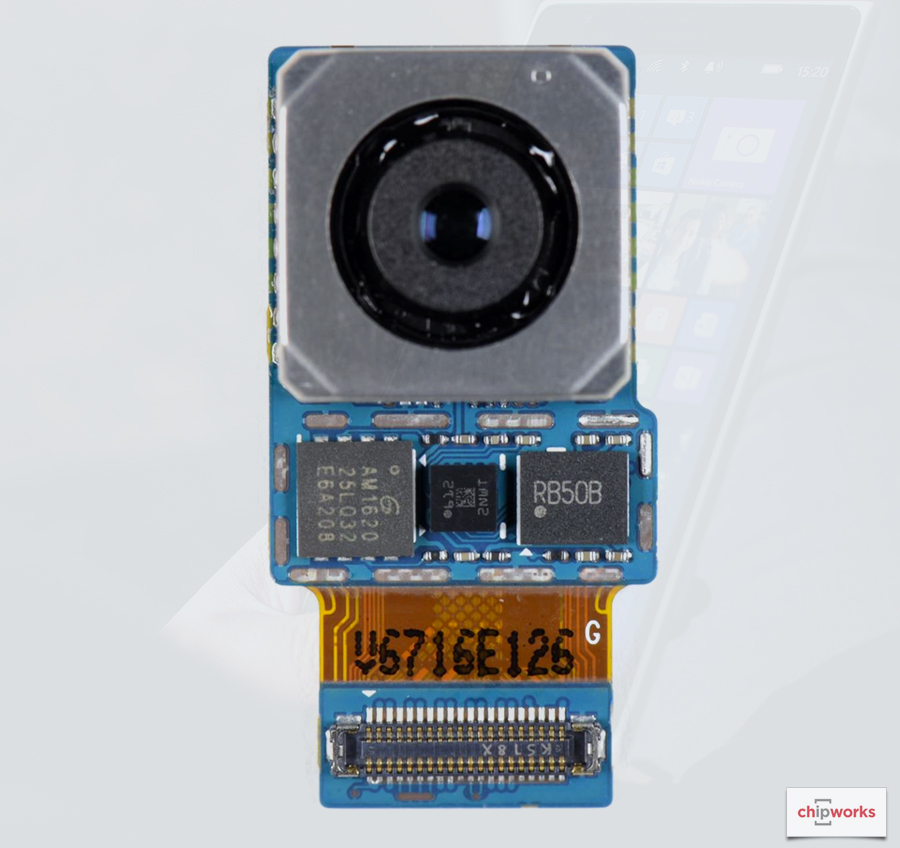
Samsung Galaxy Note 7 Main Camera
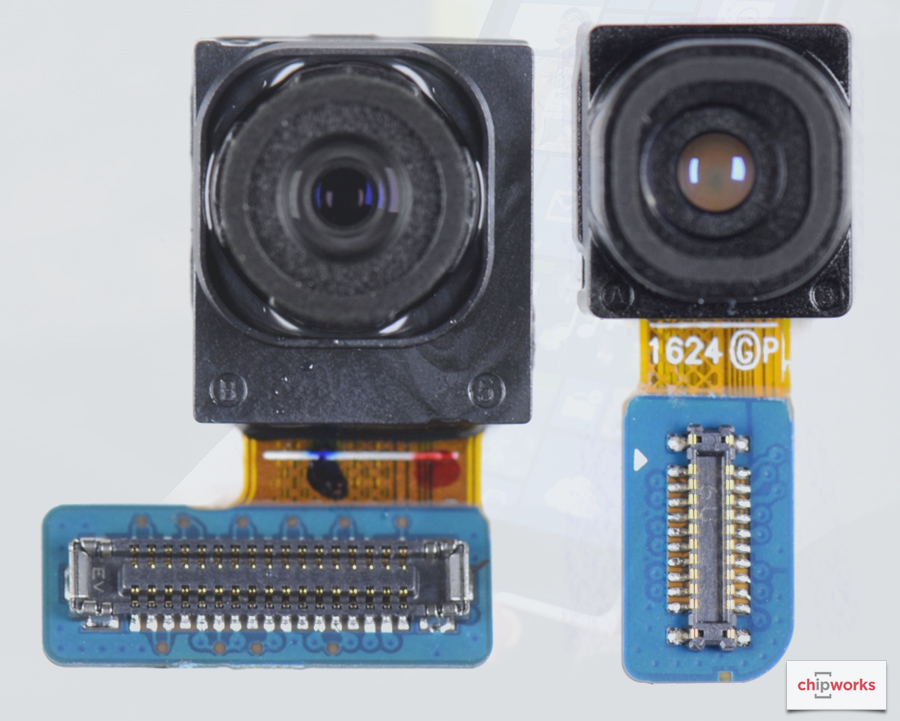
Samsung Galaxy Note 7 Selfie Camera
Cameras
There are three cameras in the Note 7: the usual front- and rear-facing units and an extra one for the iris-scanning security feature of this phone. The main camera is 12 MP with optical image stabilization (OIS) provided by a STMicroelectronics L2GIS 2-axis gyroscope, the middle chip in this picture:
The selfie camera is a 5 MP Samsung part and the iris scanner is also Samsung-made, but we have not yet characterized it as to size and technology.
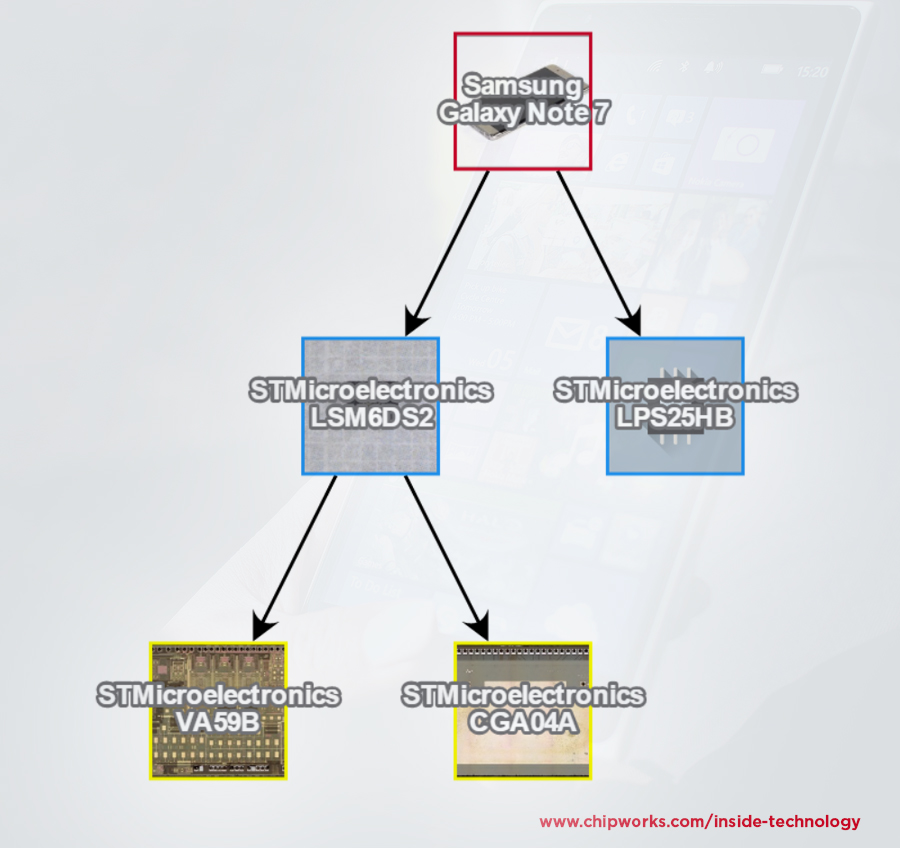
Sensors
STMicroelectronics supplies all the MEMS motion sensors in the Note 7. In addition to the OIS sensor, there is a LPS25HB pressure sensor and a LSM6DS2 6-axis gyroscope/accelerometer module. All of these have many design wins in phones and wearables.
In addition to the motion sensors, there is an infrared proximity sensor, a heart-rate sensor, and the now ubiquitous fingerprint sensor. The proximity and heart rate sensors appear to be Samsung products, while the fingerprint sensor is reported to be from Synaptics.
| Component | Manufacturer | Part Number |
| Antenna Switch Modules | Murata | 312 |
| Murata | 317 | |
| EPCOS | D5287 | |
| Envelope Tracking Power Supply | Samsung | Shannon 735 |
| Front End Module | Skyworks | SKY78048-12 |
| GPS | Broadcom | BCM4774IUB2G |
| NFC Controller | Samsung | 81DGXS1 |
| Power Amplifier Modules | Avago | AFEM-9030 |
| Avago | AFEM-9030 | |
| RF Transceiver | Samsung | Shannon 935 |
| Wireless Charging | IDT | IDTP9925 |
| Wi-Fi Module | Murata | KM6608027 |
RF front end
The RF front end in a phone these days is a very complex thing. The connectivity specification covers a multitude of bands (2G, 3G, 4G LTE-A), as well as Wi-Fi (802.11 a/b/g/n/ac), Bluetooth v4.2, GPS, A-GPS, GLONASS, BDS, GALILEO, NFC, and wireless charging. It’s no wonder that we have quite an inventory of parts in that area of the phone:
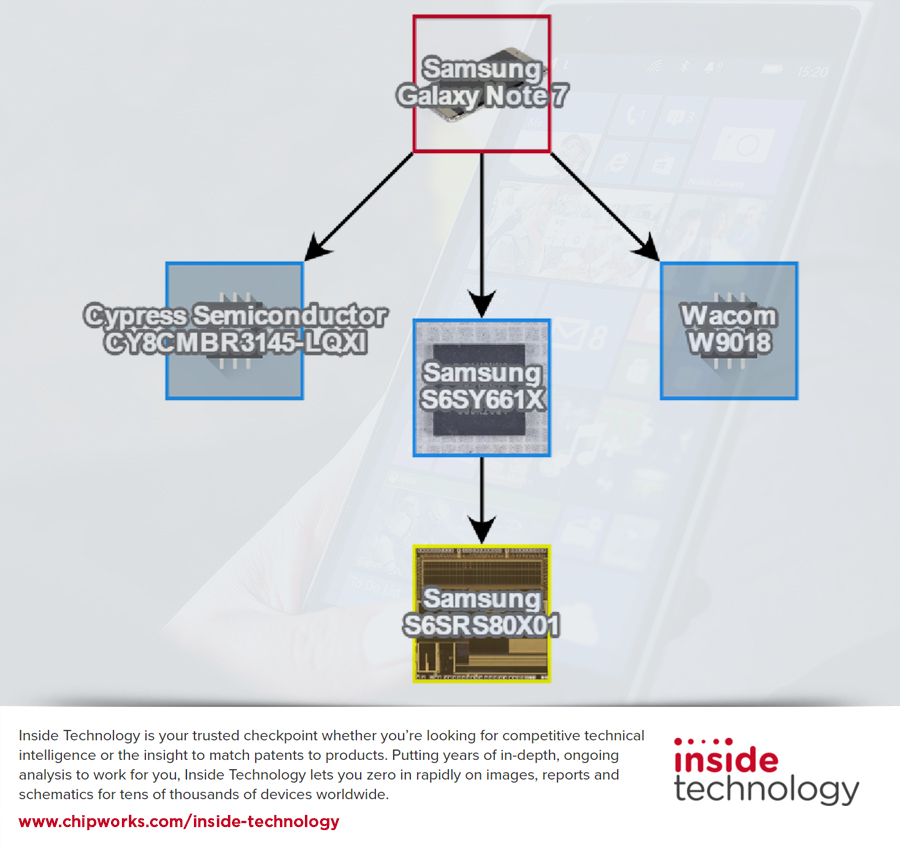
Touch controllers
The touch control function seems to be distributed in the Note 7, possibly since we also have the S-Pen capability. There is a Cypress CY8CMBR3145 CapSense® Express™ controller, a Samsung S6SY661X, and a Wacom W9018 digitizer, which apparently assesses the different pressure levels applied by the S-Pen to the screen.
Power management
As with every other smartphone, there are multiple power management ICs (PMICs), in this case five:
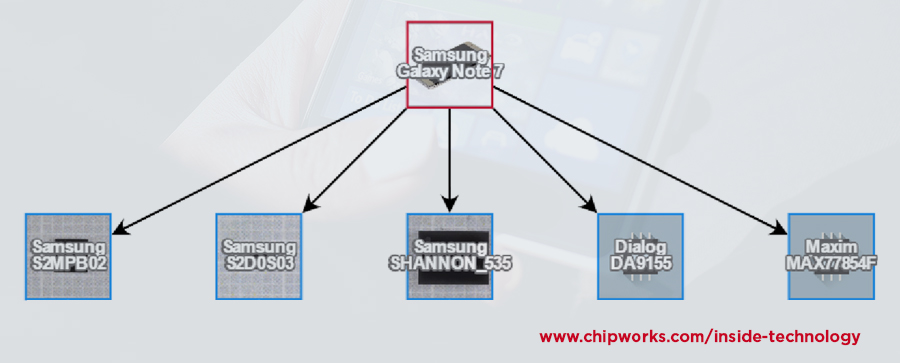
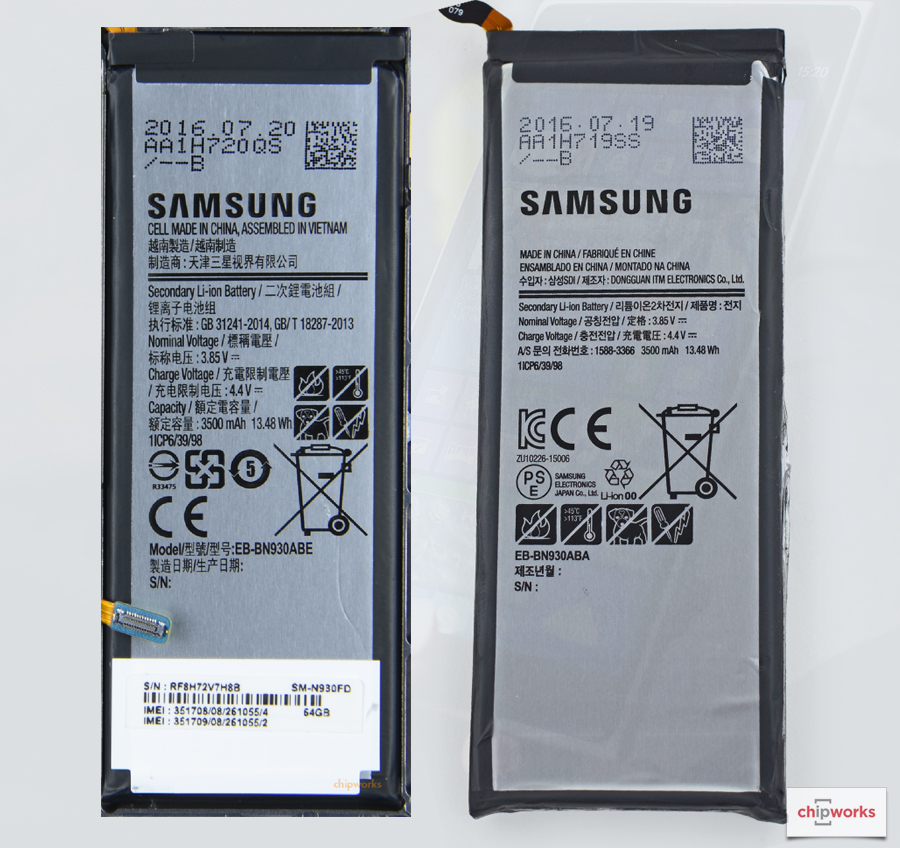
And what about the batteries?
It’s now well known that, due to some phones exploding or catching fire while being charged, Samsung has launched a recall of the millions of Note 7s already shipped. On their UK website, they clarified that “An overheating of the battery cell occurred when the anode-to-cathode came into contact, which is a very rare manufacturing process error.” In other words, something in the battery shorted out, likely because a separation membrane within the battery was defective.
Below is a picture of the battery in the phone we dismantled (left). Note the “Cell Made in China, Assembled in Vietnam”. Out of curiosity, we checked out the iFixit teardown of the Note 7, and noted that their phone had a different battery (right).
The iFixit phone reads only “Made in China”, so there are two battery sources. If you look closer, model EB-BN930ABE (left) is from Vietnam, and model EB-BN930ABA (right) is the Chinese version.
The Korea Herald added a bit more detail and confirmed the two battery sources as company affiliate Samsung SDI, supplying 70% of Note 7 batteries, and Chinese company ATL, supplying the remaining 30%.
The whole issue is further complicated by the non-removable nature of the batteries in the phone, necessitating a full recall. Unfortunately, we can no longer send ours in to get it replaced!





